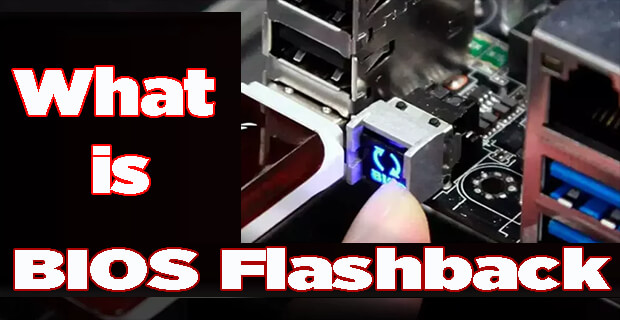BIOS Flashback is a feature found in many modern computer motherboards, primarily designed to facilitate the updating or recovery of the system’s Basic Input/Output System (BIOS) firmware. The BIOS is essential for initializing hardware components and facilitating communication between the operating system and hardware during the boot-up process.

Users initiate the BIOS Flashback process by pressing a specific button or following a sequence of actions outlined in the motherboard’s manual. The motherboard then reads the updated BIOS firmware from the USB drive and writes it to the secondary BIOS chip, effectively recovering or updating the BIOS.
What is BIOS Flashback?
BIOS Flashback is a feature commonly found on high-end motherboard models that offers the ability to recover or update the motherboard’s system BIOS without requiring a functional CPU or memory to be installed. This feature is a valuable asset, providing a dependable method for rectifying issues stemming from BIOS failures or corruption.
If your motherboard supports BIOS Flashback, it will come equipped with a dedicated Flashback button and a specialized USB port. The following images illustrate their appearance.
As indicated in the highlighted boxes, there is a distinct USB port designated for the flashback function, labeled as ‘BIOS.’ Additionally, situated at the top are two buttons: one for resetting the BIOS to its factory default configuration (CLEAR CMOS).
Which should be noted does not reverse BIOS updates, and the other for updating the BIOS to a specific version (BIOS). Typically, these buttons need to be held for approximately 5-10 seconds to execute the flashback process.”

How Does BIOS Flashback Work?
Dual BIOS/UEFI Chips: Many motherboards come equipped with dual BIOS or UEFI chips. One of these chips contains the active BIOS/UEFI, while the other serves as a backup.
USB Port for BIOS/UEFI Updates: BIOS Flashback typically requires a specific USB port on the motherboard. This port is used for updating or recovering the BIOS/UEFI.
BIOS/UEFI File: To use Flashback, you need a BIOS/UEFI file from the motherboard manufacturer’s website. This file contains the latest version of the BIOS/UEFI.
The Process: When you want to update or recover your motherboard’s BIOS/UEFI. You follow a specific procedure outlined in the motherboard’s manual. It usually involves connecting a USB drive with the UEFI file to the dedicated USB port and pressing a button or holding it down for a specified duration.
Automatic Recovery: Once initiated, Flashback automatically updates or restores the BIOS/UEFI, even if the motherboard has a corrupt or non-functional BIOS/UEFI. This is incredibly useful if a failed BIOS update or other issues render your motherboard unbootable.
You should use BIOS FlashBack in the following situations:
- BIOS Updates: When updating or upgrading your motherboard’s BIOS.
- Failed BIOS Update: If a BIOS update goes wrong and your system won’t boot.
- Initial Setup: For new systems, especially if the CPU isn’t compatible with the current BIOS.
- BIOS Corruption: To recover from BIOS corruption without a functional CPU or memory.
- CPU Upgrades: When switching between CPU generations on the same motherboard.
- Boot Problems: To address persistent boot issues related to the BIOS.
- Clearing BIOS Settings: To reset BIOS settings to defaults, useful for resolving configuration-related stability problems.
Always follow the manufacturer’s instructions carefully and ensure a stable power source during the process. Use the FlashBack judiciously and only when necessary.
Significance of BIOS Flashback:
BIOS Flashback is a crucial feature for several reasons:
Reliability: It ensures that your motherboard remains functional even if a BIOS/UEFI update goes awry. It is preventing the need for costly repairs or motherboard replacements.
Future-Proofing: Flashback makes it easy to update your motherboard to support new processors or address critical security vulnerabilities.
User-Friendly: The process is user-friendly and typically does not require a working CPU, RAM, or graphics card, making it accessible to both novices and experienced PC builders.
In conclusion, BIOS Flashback emerges as a crucial innovation in the realm of motherboard technology. Which is offering users a lifeline in the face of BIOS failures or corruption. This feature, characterized by a dedicated button and USB port. It empowers individuals to recover and update their system BIOS with ease and reliability. As we continue to witness advancements in computer hardware, BIOS Flashback remains a valuable tool. Which is ensuring that our systems run smoothly and securely, even in the face of unforeseen challenges.
